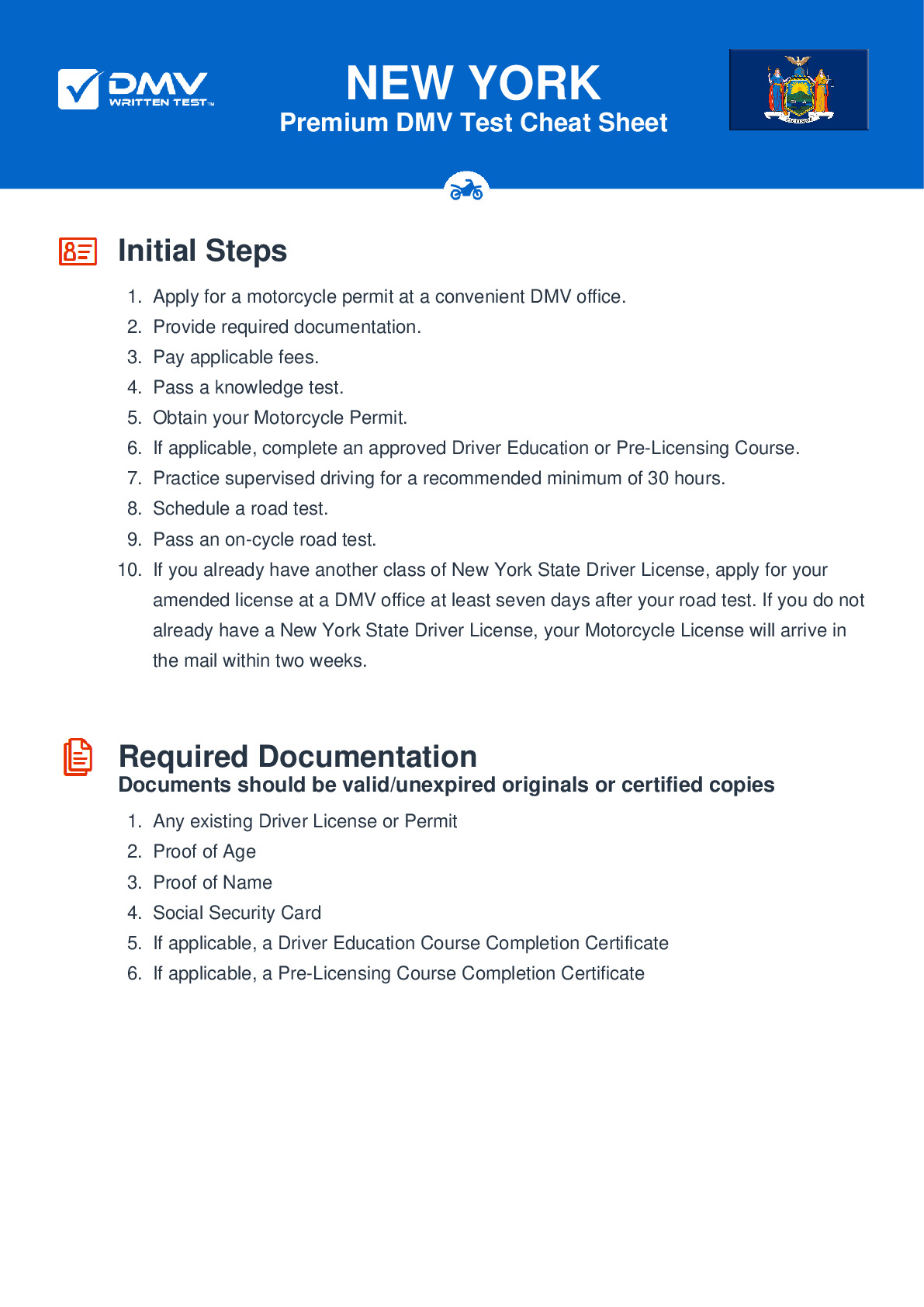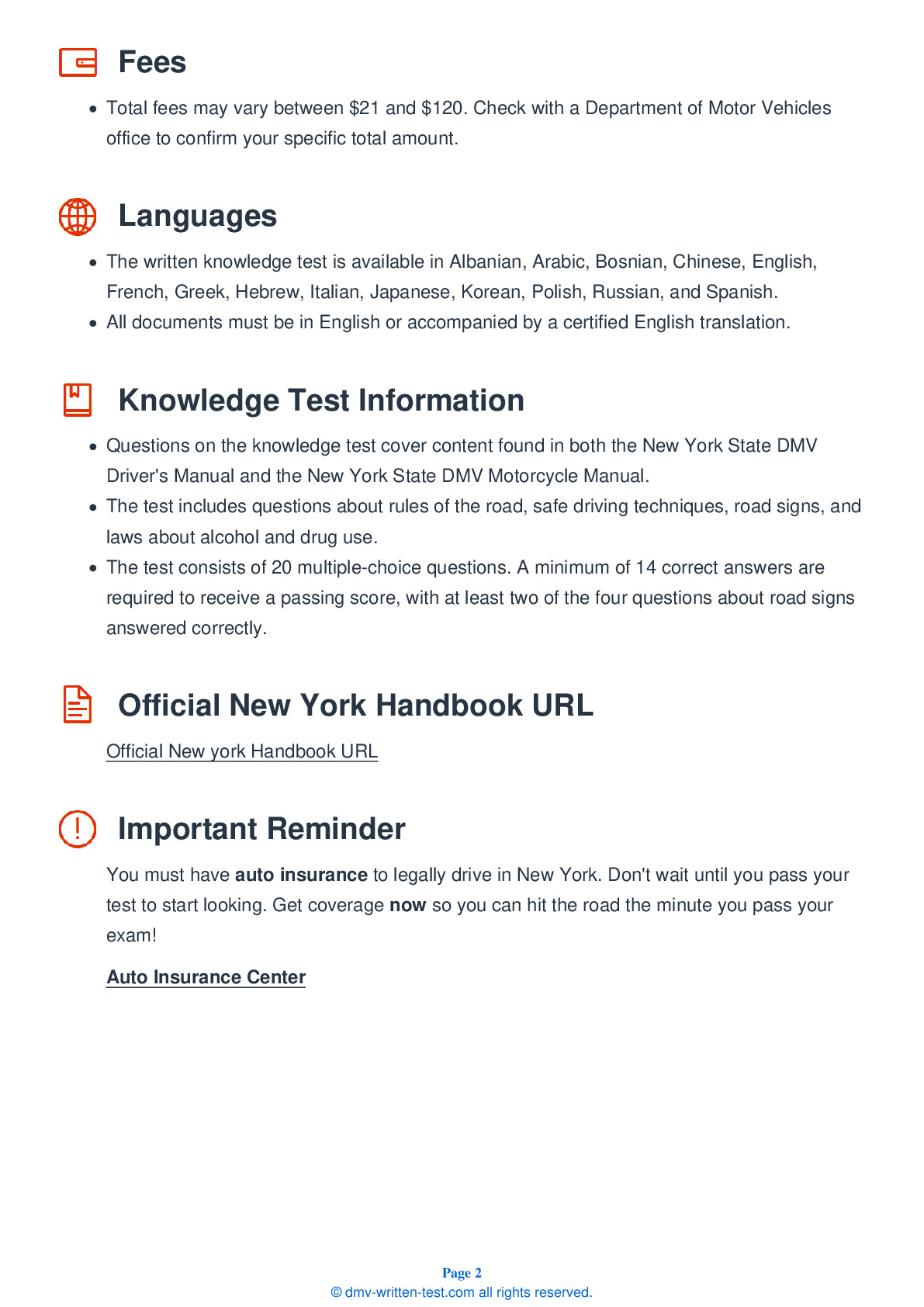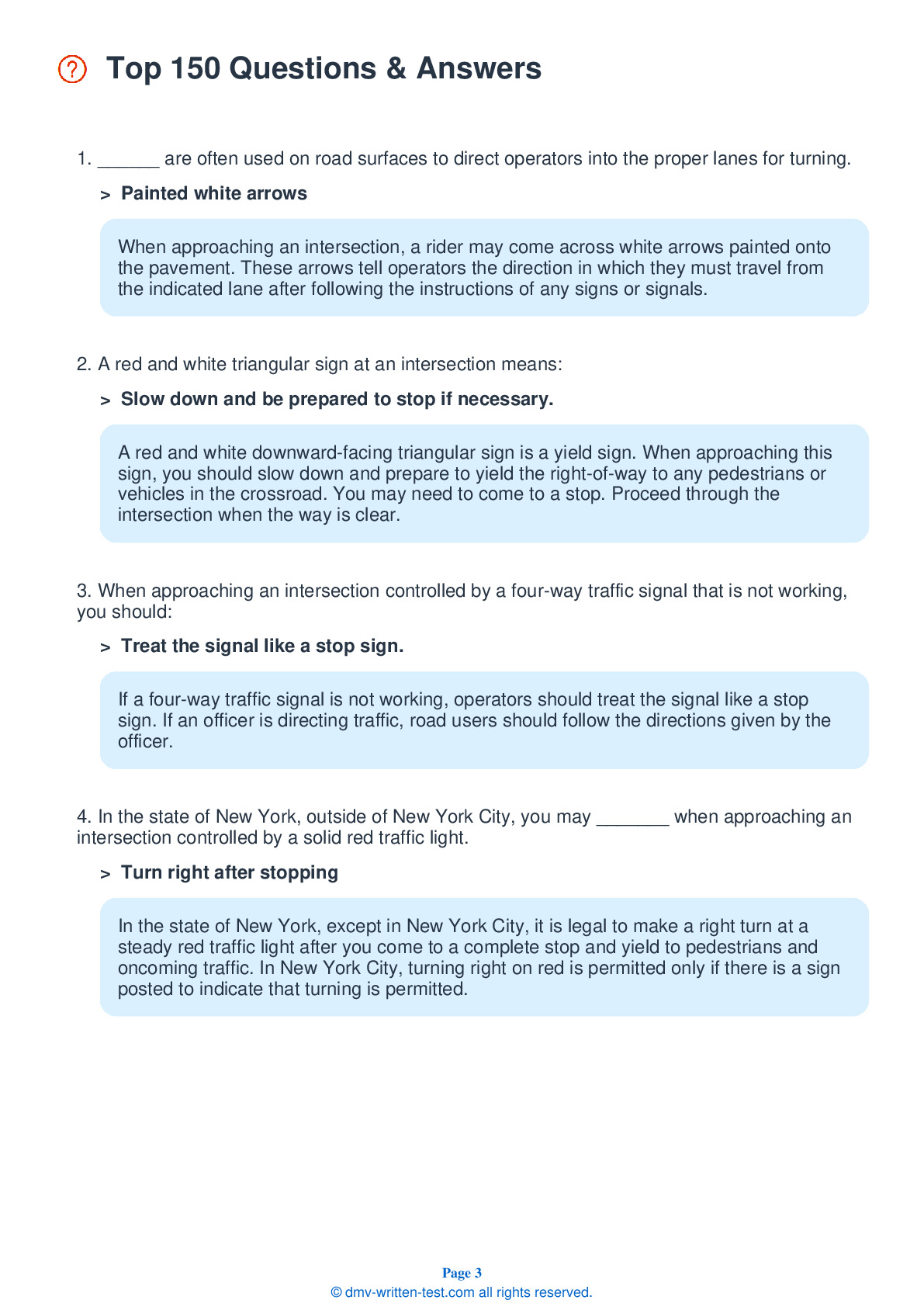2025 New York Motorcycle Permit Test 2
The following questions are from real DMV written motorcycle permit tests. These are some of the actual permit questions you will face in New York when getting your motorcycle learners permit. Each motorcycle theory practice test question has three answer choices. Select one answer for each question and select "grade this section." You can find this button at the bottom of the drivers license quiz. For a complete list of questions and answers for New York please visit https://cheat-sheets.dmv-written-test.com/en/new-york/motorcycle.
Number of Tests
Number of Question
Passing Score
1. The front brake can provide how much of a motorcycle's braking power?
Explanation
The front brake of a motorcycle is more powerful than the rear brake. It can provide at least three-quarters of the motorcycle's total stopping power.
2. Your lane position should not:
Explanation
A properly chosen lane position can optimize a number of safety factors. Your lane position should keep you out of other vehicles’ blind spots, increase your ability to see and be seen, help you avoid surface hazards, help you avoid wind blasts from other vehicles, and provide you with an escape route from any hazards that might arise. You should be positioned in a way that discourages other drivers from trying to share your lane.
3. In New York State, an operator with a minimum blood alcohol content (BAC) of _____ is considered legally intoxicated.
Explanation
In New York State, a person with a blood alcohol content (BAC) of 0.08 percent or higher is considered legally intoxicated and may not operate a motor vehicle.
4. If you must stop quickly in a curve, you should:
Explanation
If you must stop quickly while in a curve, you should first straighten and square the handlebars, then stop. If straightening your motorcycle is not possible, you should apply the brakes smoothly and gradually, reduce your lean angle, then increase the brake pressure as you slow down.
5. When riding at night, how should your following distance compare to your following distance during the day?
Explanation




